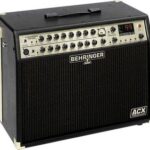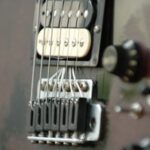It’s not difficult to find a child (girl or boy) who wants to learn how to play the guitar. As the parent, how do you know which one to get? There are so many choices. We have electric guitars, acoustic guitars, 12 string guitars, bass guitars and even 7 string guitars. Don’t worry, after you’re done reading this article, you’ll have a good understanding on how to choose a guitar for your child that inspires them to create and learn but doesn’t hammer you financially.
Electric Guitars
While I’ll agree that most electric guitars are easier to play than many acoustics, they are not always the best guitar for a child to learn on. I’ve taught guitar to kids. The ones who had acoustic guitars always seemed to progress faster than the ones with the electric guitars. Here’s a likely scenario for you. You go out and spend $200 on an electric guitar for your son. You spend another $200 on an amp because he didn’t like that little amp with the electric guitar/amp pack. You spend $10 on a strap and another $15 on a guitar cord. Total bill is $425. Your son has his lesson once a week and is given exercises to practice in between lessons. During his practice time, he spends a bit of time with the exercises but plays a bit. He kicks on the distortion effect on his amp, does his best Eric Clapton impression in front of the mirror. Takes the whammy bar on his guitar and makes it sound like a race car or police siren. There’s nothing wrong with that. I’ve been playing for 30 years and I STILL do that. While your son is doing that, the kid down the street with his $100 acoustic guitar is working on his exercises and making his practice time more productive thus learning faster. 4 months later, both kids get a girl friend and loose interest in the guitar. The guitars are stored in the closet. You just spent $425 for nothing. The kid down the street? His parents are only out $100.
Nylon String Guitars
Nylon string guitars (also known as classical guitars) are easy on your fingers and a popular choice for a beginner guitar because of that. And while your child can learn anything on a nylon string guitar that he or she can on a steel string guitar, they won’t likely get the same enjoyment out of it. Nylon string guitars are primarily used to play classical, or flamenco style music. If your child is into that type of music, a nylon string guitar would be a good choice.
Steel String Acoustic Guitars
In my experience, steel string acoustic guitars are the best for a child to learn on. You don’t have to spend a lot of money on one. You can get a decent quality steel string acoustic guitar for a beginner for between $100 and $200. That’s a pretty low risk investment and if they really take off with it and don’t loose interest, you can feel safe in purchasing a more expensive and better quality acoustic or electric guitar. With a steel string acoustic guitar, your child will have the best chance in learning to play guitar.
How Much Do I Spend?
You can pay anywhere from $50 to $5000 for an acoustic or electric guitar. In most cases, you get what you pay for. A $1600 Taylor acoustic guitar will feel and sound far better than a $100 Rouge acoustic guitar. I would not recommend spending more than $200 total on your child’s first guitar. If they insist on an electric guitar, I wouldn’t recommend spending more than $250 total. Your child’s first guitar can be a risky investment. Only spend as much as you’re willing to loose.
Assuming that you’ve taken my advice, purchased a guitar for your child and started them on lessons, here’s a way to see if they are really into learning the guitar. If your child’s instructor tells them to practice for at least an hour 2 days a week, is that all they practice? Does your child practice because you just spent $200 on the guitar? Does your child have to be told or pressured to practice? These are bad signs. If your child is going in their room and practicing considerably MORE than required and doing it on their own without being told, and spending more time practicing than on the play station, your child is likely to progress very well. Who knows? You may have a rock star for a child in another decade or so. Good luck.



